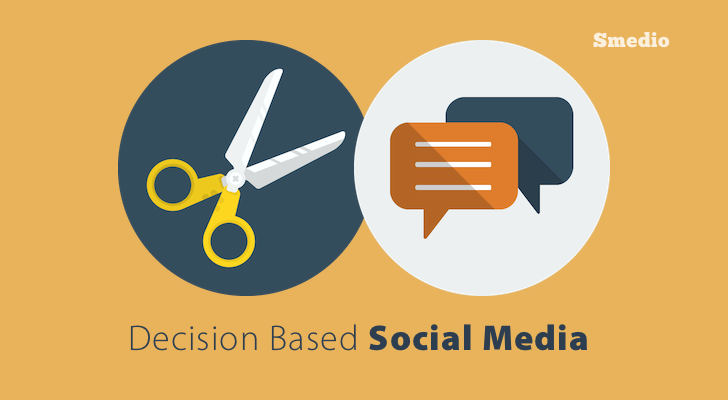Detective novelist Sue Grafton has this to say about ideas:
“Ideas are easy. It’s the execution of ideas that separates the sheep from the goats.”
This is precisely the problem that we marketers face when trying to execute our social media campaigns. Ideas come to us dime a dozen but what is the right way to translate them into actual posts, engagement and conversions on social media?
With experience from working on all sorts of digital marketing and content campaigns, I find that it is best to break down the task into three decisions, based on specific answers to these questions:
Should the campaign use curated or original content?
Should you advertise or use sponsored posts on various social platforms?
Which are the right tools to execute this campaign?
Let’s take a detailed look.
Content: Create or Curate?
Most social media platforms require multiple posts on a daily basis, with some like Twitter requiring at least one post every couple of hours to stay on your users’ radar. With those kind of content requirements, it can be an uphill task to create every piece of content that you post on social media.
To get around the problem of limited resources for content creation, most brands resort to curating content created by others and reposting them on their own social networks.
Curated content allows your brand to offer valuable content to your fans quickly and more easily than if you had to create each piece in-house. With content that is curated from celebrities and thought leaders, you expose your user to ideas that they might not have hit upon by themselves and create a positive impression upon them in the process. However, using too much curated content defeats the purpose of putting up posts on social media. Customers who click through on curated content land up on some third party site that hosts the content, leaving you with no traffic and no conversions for that piece of content that you posted.
Creating content, on the other hand, helps you manage the communication from start to end. The purpose of the content, the tone and exact messaging of the content rests in your hands. Even better, the clicks that your self-created content receives lead the user to your own site and help in boosting traffic and conversions.
To break the created vs. curated content conundrum, Tristan Handy of Argyle Social studied over 150,000 social media posts – he found that the golden mean for getting the best conversions, the balance between created content and curated content lies in the ratio of 40:60. Why not start out with this proportion and see if it works for your brand?
Organic vs. Paid
In the early years of social media marketing, brand activities on social networks were largely organic, meaning all conversation around a brand was posted for free by the brands themselves and advertising was restricted to digital networks outside social media.
While Facebook was the forerunner in paid advertising on social media, Twitter followed suit soon enough. Today, LinkedIn has an active paid marketing option while Pinterest is toying with the idea for over a year.
Interestingly, as the advertising platforms of each network become more robust, the organic reach of organic content posted on social media has started dropping drastically. With the repeated tweaks in Facebook’s algorithm in 2013 and 2014, reach has dropped to a pathetic 1-2% of brands’ fan base in some cases. Here’s some latest data on Facebook reach broken down by post type:

With falling visibility for organic content, it has now become imperative to invest money in paid advertising on social media. Facebook and LinkedIn have their ads, Twitter has its promoted tweets that help you reach out to precise demographic, socio-economic and psychological customer types based on the information contained in their social profiles. Such deep personal information allows for better targeting and better visibility for brands. A recent study showed that paid ads convert more than twice as well as organic posts on Twitter. Facebook shows a minor bump ahead for paid ads while the situation is totally reversed on Pinterest.

Paid vs. Organic Post Conversion Rates on Social Media (Source)
From the figure above we can infer that paid posts outperform organic ones on social media by at least 25% from a conversions perspective. However, it is also a sign of caution. Don’t rush headlong into paid advertising on social media without checking what type of content works best on which platform.
The Right Tools
Since most brands are active on more than one social network, it is helpful to use a social media management tool like Buffer or SproutSocial to manage your social media marketing. Both of these are ubiquitous and have every feature to allow social media teams to collaborate on projects, monitor each social network individually on a constant basis, schedule and post content through them as well as track and measure user responses to the activities carried out.
Then there are tools like Tweepi or SocialMention that are aimed at very specific objectives. While Tweepi helps you weed out unresponsive and disengaged users from your Twitter fan base, follow interesting people, and reciprocate new followers, SocialMention lets you follow each and every mention about your brand across various platforms. It tells you who is talking about your brand, how often and on which media. It also offers a simple sentiment analysis feature to gauge where your brand stands among your target audience.
Finally, you may need to use apps or tools not built primarily for social media, but which help you complete associated tasks indirectly necessary for the execution of your social strategy. This could range from a collaborative tool such as Wrike that your team members can use to work together on content creation and real-time idea sharing to a comprehensive analytics tool such as Cyfe that helps you tie your current campaigns to your overall marketing efforts. Figure out what actions you need to take and then settle on the tools that best help you take those actions.
Your Turn
Again, your social media strategy and specific social goals will dictate the kind of campaigns that your brand rolls out on social media. Once you’re past brainstorming “the big idea” and creating a creative hook for a particular campaign, great execution lies at the heart getting the best ROI.
What sort of content, advertising strategies and tools are you using to get the maximum ROI from your social media campaigns? Please share in the comments!
[et_social_share]







